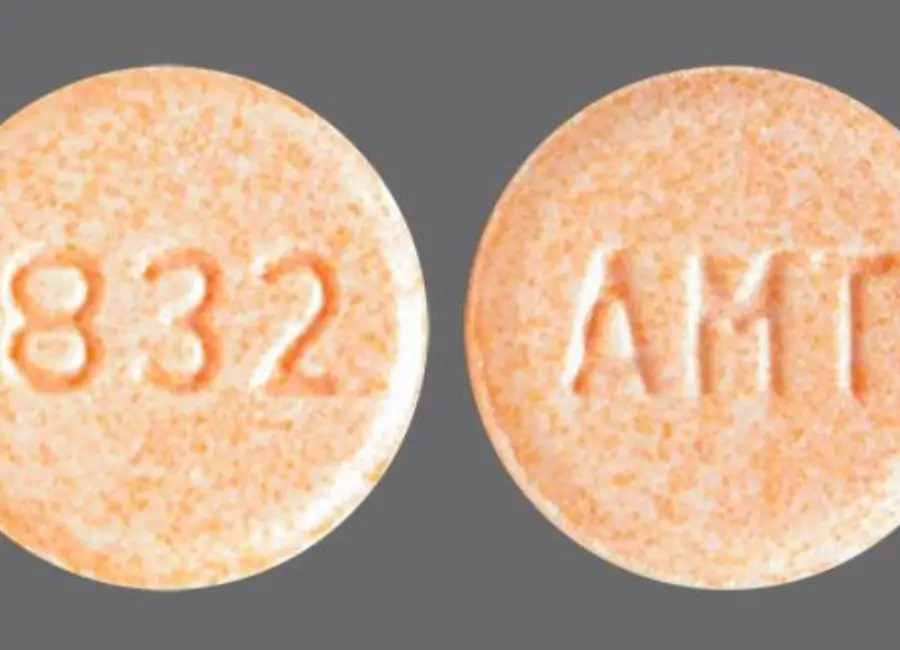9 Potential Amantadine Side Effects Dog

Today, we’re diving headfirst into a topic that every responsible pet owner should be aware of: Amantadine side effects in dogs. It’s no secret that our four-legged companions can experience a variety of health issues, and as loving caretakers, we must be well-informed. But fret not, my friends!
In this blog post, we’ll unravel the mysteries surrounding this medication and shed light on potential side effects that could affect our furry friends. So, grab a cup of coffee, get cozy, and let’s empower ourselves to give our pups the best care possible!
What is Amantadine?
Amantadine is a medication that has multiple uses and mechanisms of action. It is primarily known as an antiviral medication that was initially developed to treat influenza. However, it has also been found to have beneficial effects in the treatment of Parkinson’s disease and its symptoms.
Amantadine is classified as an antidyskinetic medicine and can help alleviate the movement problems associated with Parkinson’s disease, such as tremors and stiffness. Additionally, it has some pain control effects and may be used as an adjunct for pain relief in certain cases.
It is important to note that amantadine should only be used under the supervision of a healthcare professional, as the appropriate dosage and treatment duration may vary depending on the specific condition being treated.
Amantadine Uses in Dogs
In veterinary medicine, amantadine is primarily prescribed for the following conditions:
- Osteoarthritis pain management
- Canine degenerative myelopathy
- Canine cognitive dysfunction (doggie Alzheimer’s)
- Neurological disorders.
Amantadine Side Effects Dog

The following are some common Amantadine side effects on dogs you should know:
1. Gastrointestinal Upset
Amantadine can irritate the gastrointestinal tract in some dogs, leading to symptoms like vomiting, diarrhea, or a reduced appetite. The medication might cause mild stomach discomfort, resulting in dogs avoiding their regular meals.
To mitigate this, veterinarians often recommend administering the drug with food. However, if the gastrointestinal upset persists or worsens, it’s crucial to consult your vet, as dehydration and nutrient imbalances could become concerns.
2. Lethargy
When dogs take Amantadine, they might experience a decrease in energy levels and overall lethargy. This side effect is more common during the initial stages of treatment and usually improves as the dog’s system adjusts to the medication.
If the lethargy persists or becomes severe, it’s essential to seek professional advice, as it could be a sign of an adverse reaction or an underlying issue.
3. Dizziness or Ataxia
Ataxia, often described as a lack of coordination, can be observed in some dogs taking Amantadine. They may appear unsteady on their feet, have difficulty walking in a straight line, or exhibit clumsiness.
It’s crucial to monitor your dog’s movements closely, especially when they first start the medication. If ataxia is severe or persists, consult your veterinarian to determine the best course of action.
4. Changes in Urination
Amantadine can affect a dog’s urinary habits. Some dogs might experience an increased frequency of urination or changes in the color of their urine while on the medication.
It’s vital to keep an eye on your dog’s urination patterns and report any significant changes to your veterinarian to ensure there are no underlying urinary tract issues.
5. Appetite Changes
Amantadine can have an impact on a dog’s appetite. Some may experience a decrease in hunger, leading to reduced food intake and potential weight loss.
On the other hand, some dogs might have an increased appetite, which could lead to weight gain if not managed carefully. Monitoring your dog’s eating habits and consulting your veterinarian can help address any appetite changes effectively.
6. Agitation and Restlessness
A less common but notable side effect of Amantadine in dogs is increased agitation or restlessness. Your usually calm and collected canine companion may become more anxious or restless while on this medication.
If you notice these behavioral changes, it’s essential to discuss them with your veterinarian to explore potential solutions or alternative treatment options.
7. Behavioral Changes
Amantadine might induce behavioral changes in dogs. Some dogs may become more aggressive or display confusion and disorientation. It’s essential to closely observe your pet’s behavior while on this medication and communicate any behavioral changes to your vet promptly.
They can help determine if these changes are directly related to the medication or if other factors might be influencing your dog’s behavior.
8. Respiratory Problems
While rare, some dogs may experience respiratory issues as a side effect of Amantadine. These problems could range from mild wheezing to difficulty breathing.
If you notice any unusual respiratory symptoms, it’s essential to seek immediate veterinary attention, as respiratory issues can be severe and potentially life-threatening.
9. Excessive Drooling
Increased salivation or excessive drooling is occasionally reported as a side effect of Amantadine. While it might not pose a significant health risk, excessive drooling could be bothersome to the dog and the pet owner.
If the drooling is severe or accompanied by other concerning symptoms, seek advice from a veterinarian to rule out any potential issues.
Precautions and Interactions
Before starting amantadine, inform your veterinarian of any existing medical conditions or medications your dog is taking. Certain drugs may interact with amantadine, potentially leading to complications.
When to Call the Vet
If your dog experiences severe side effects or adverse reactions to amantadine, do not hesitate to contact your veterinarian. Prompt action can prevent any potential complications.
Preventing Amantadine Side Effects in Dogs
To prevent or minimize potential side effects of amantadine in dogs, here are five best practices:
Proper Dosage:
- Follow the veterinarian’s prescribed dosage instructions carefully.
- Ensure that you administer the correct dosage according to your dog’s weight.
- Never exceed the recommended dosage without consulting your veterinarian.
Gradual Introduction:
- Start with a low dose of amantadine and gradually increase it as directed by your veterinarian.
- This helps the dog’s system to adjust to the medication and reduces the likelihood of adverse reactions.
Monitor for Side Effects:
- Observe your dog closely after starting amantadine therapy.
- Look out for any signs of side effects such as mild gastrointestinal upset, restlessness, agitation, or dry mouth.
- If you notice any concerning side effects, promptly contact your veterinarian for guidance.
Regular Veterinary Check-ups:
- Schedule regular check-ups with your veterinarian while your dog is on amantadine.
- These visits will allow the vet to monitor your dog’s progress, adjust the dosage if needed, and address any concerns or side effects.
Avoid Potential Drug Interactions:
- Inform your veterinarian about all medications, supplements, or treatments your dog is receiving.
- Amantadine generally has a low risk of drug interactions, but it’s important for your vet to have a complete picture of your dog’s medication regimen to avoid any potential complications.
Remember, every dog is unique, and your veterinarian is your best resource for guidance and advice specific to your dog’s health condition and medication regimen.
Related Questions
Can Amantadine cause any side effects in dogs?
Yes, like any medication, Amantadine can potentially cause side effects in dogs. It is important to be aware of the potential risks and consult with your veterinarian before starting your dog on this medication.
What are some common side effects of Amantadine in dogs?
Common side effects of Amantadine in dogs may include restlessness, increased heart rate, gastrointestinal upset (such as vomiting or diarrhea), loss of appetite, and changes in behavior. These side effects are typically mild and temporary, but if they persist or worsen, it is advisable to contact your veterinarian.
Are there any serious side effects that I should be concerned about?
While serious side effects of Amantadine in dogs are rare, they can occur. Some potential serious side effects include seizures, allergic reactions (such as difficulty breathing or swelling), and changes in the dog’s mental state (such as confusion or agitation). If your dog exhibits any of these symptoms, seek immediate veterinary attention.
Learn more about identifying a sick dog.
How can I minimize the risk of side effects when giving my dog Amantadine?
To minimize the risk of side effects, it is crucial to follow your veterinarian’s instructions for administering Amantadine. Ensure that you give the correct dosage and monitor your dog closely for any unusual reactions. If you have any concerns, do not hesitate to reach out to your veterinarian for guidance.
Can Amantadine interact with other medications my dog is taking?
Yes, Amantadine can potentially interact with other medications. It is essential to inform your veterinarian of any medications, supplements, or herbal products your dog is currently taking. This will help them determine if Amantadine is safe to use alongside other medications or if any dosage adjustments are necessary.
Are there any specific breeds or health conditions that make dogs more susceptible to Amantadine side effects?
While any dog can potentially experience side effects from Amantadine, certain breeds or individual dogs with pre-existing health conditions may be more vulnerable. Dogs with a history of seizures or epilepsy, kidney or liver problems, heart conditions, or those on other medications may have an increased risk of side effects. It is crucial to discuss your dog’s medical history with your veterinarian to ensure Amantadine is appropriate for them.
Conclusion
In conclusion, while Amantadine can be a helpful medication for dogs with certain conditions, it’s important to be aware of the potential side effects. Just like with any medication, there are risks involved, and it’s crucial to monitor your furry friend closely during the treatment.
Keep a watchful eye out for any changes in behavior, appetite, or physical health. If you notice any concerning side effects, be sure to consult your veterinarian immediately. As responsible pet owners, our priority is always the well-being of our four-legged companions. Stay informed, stay vigilant, and keep your pup healthy and happy!
